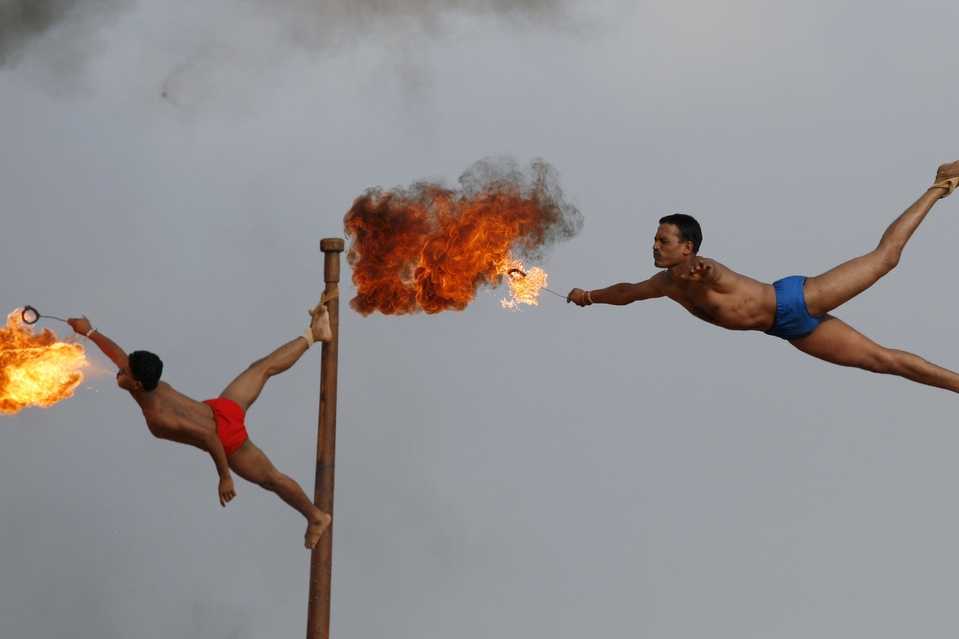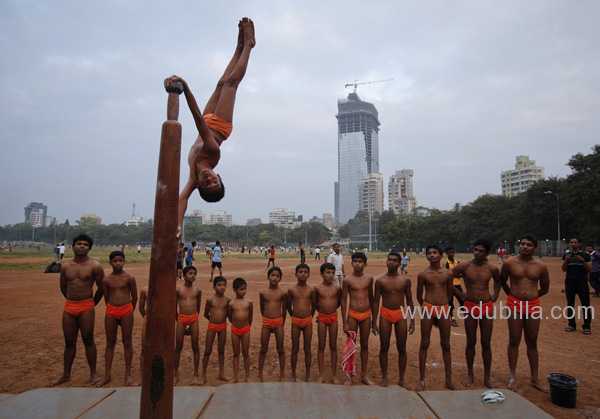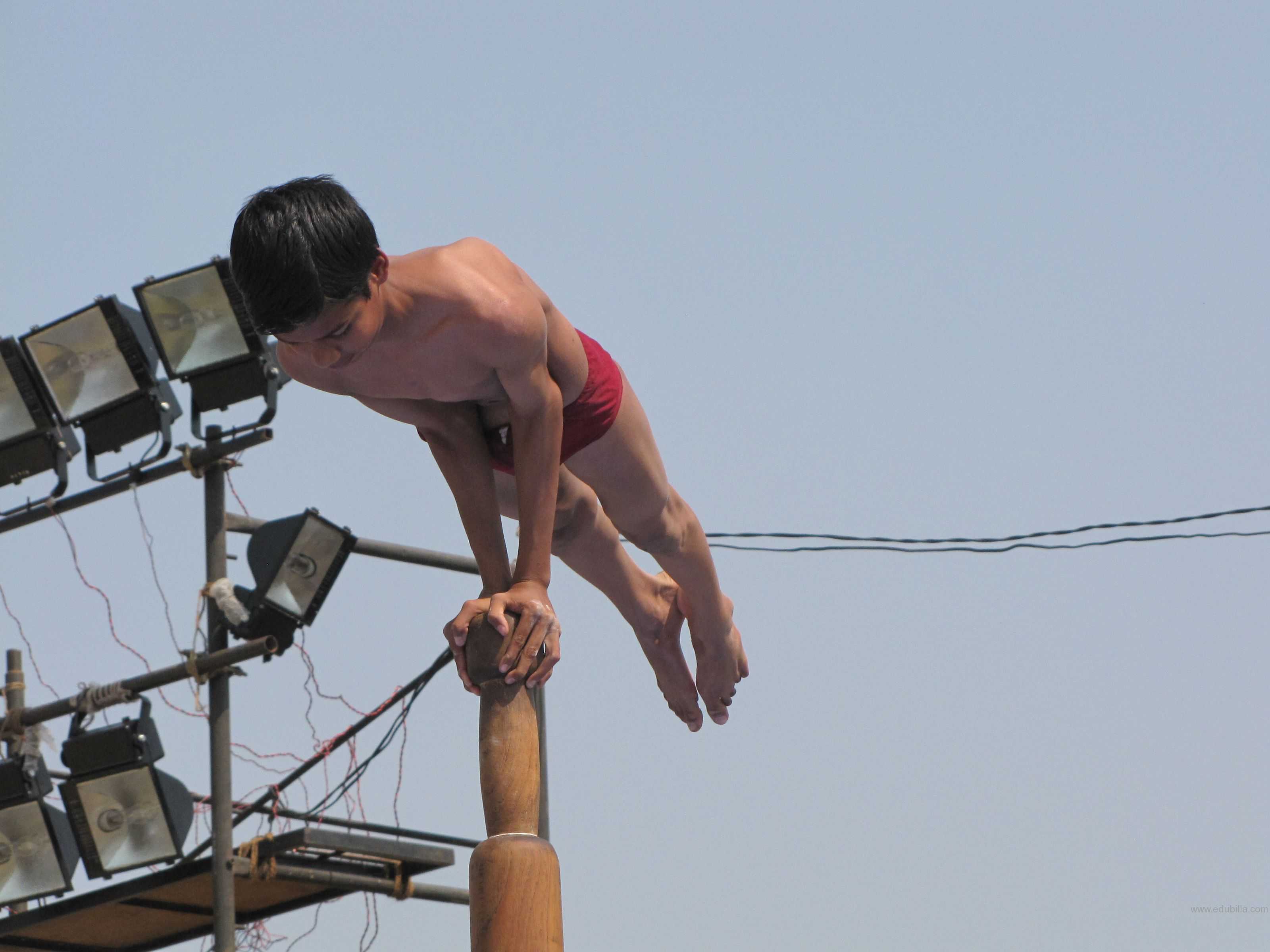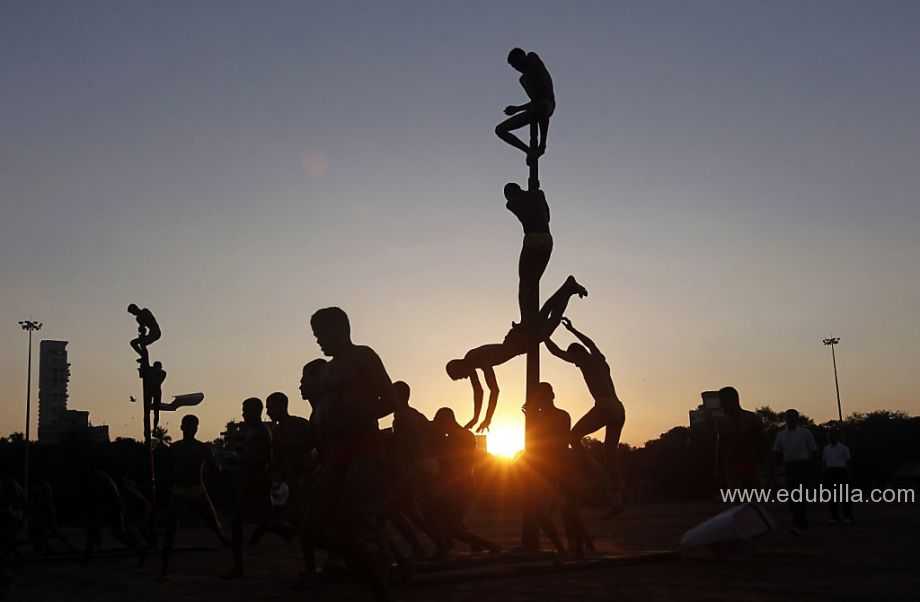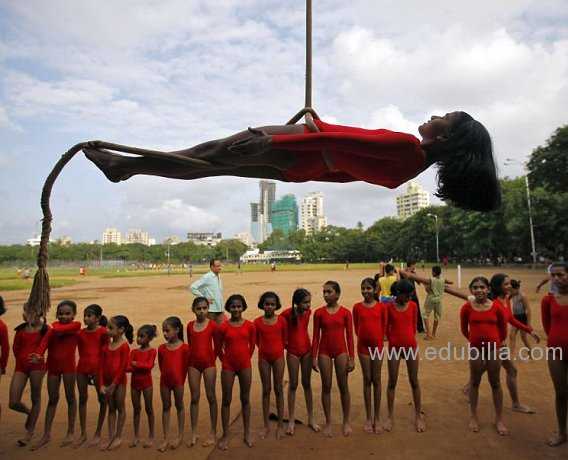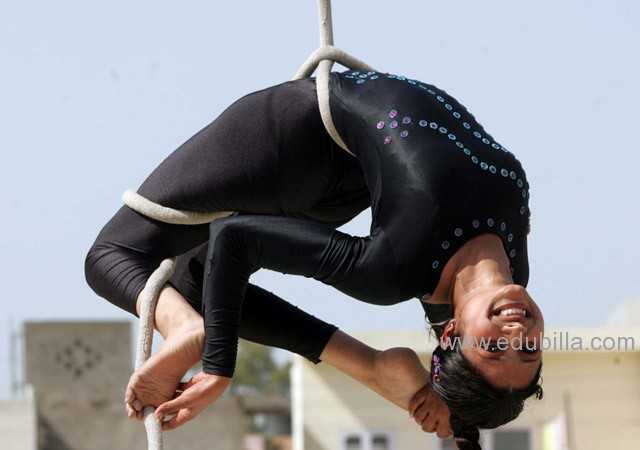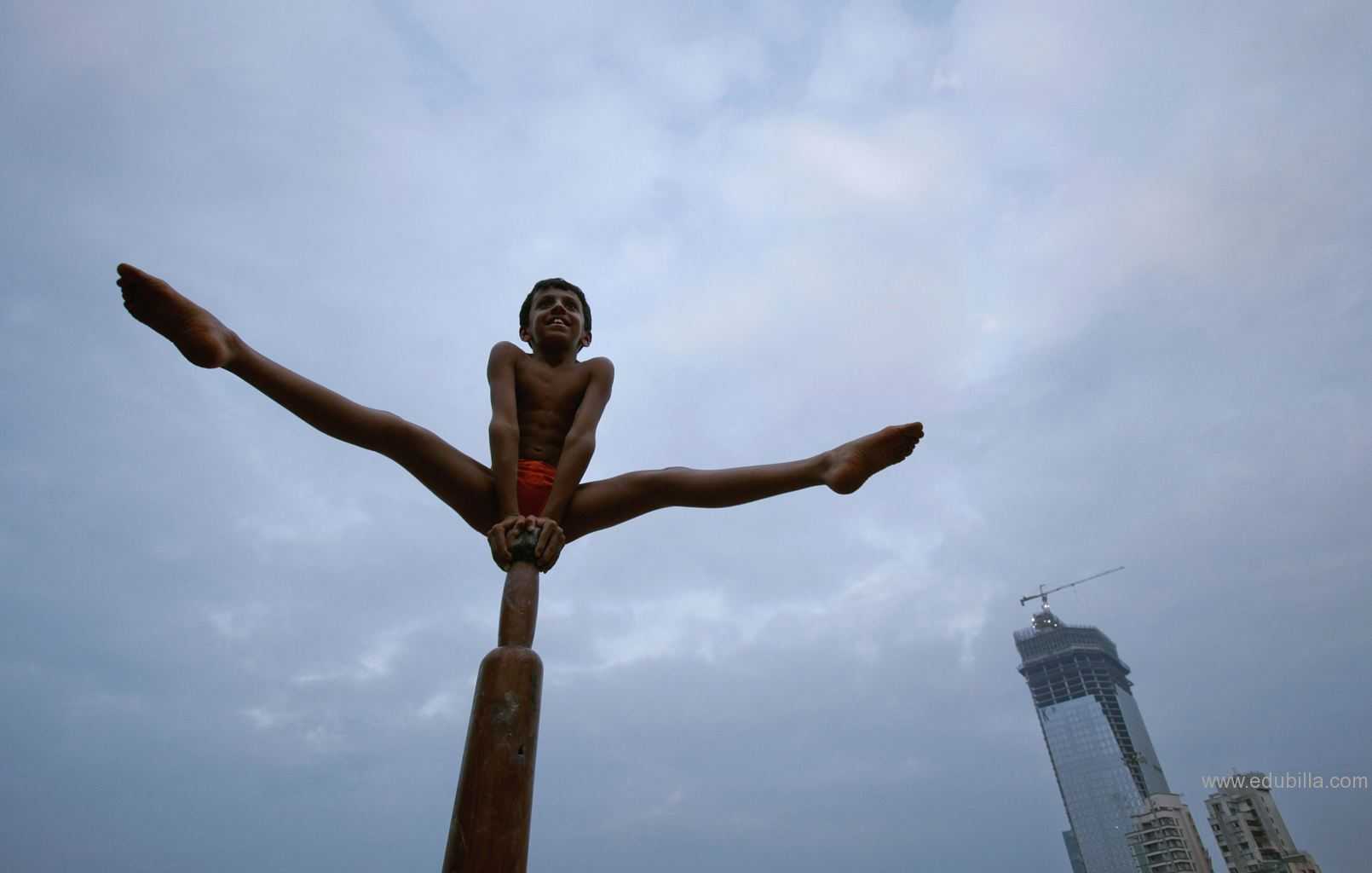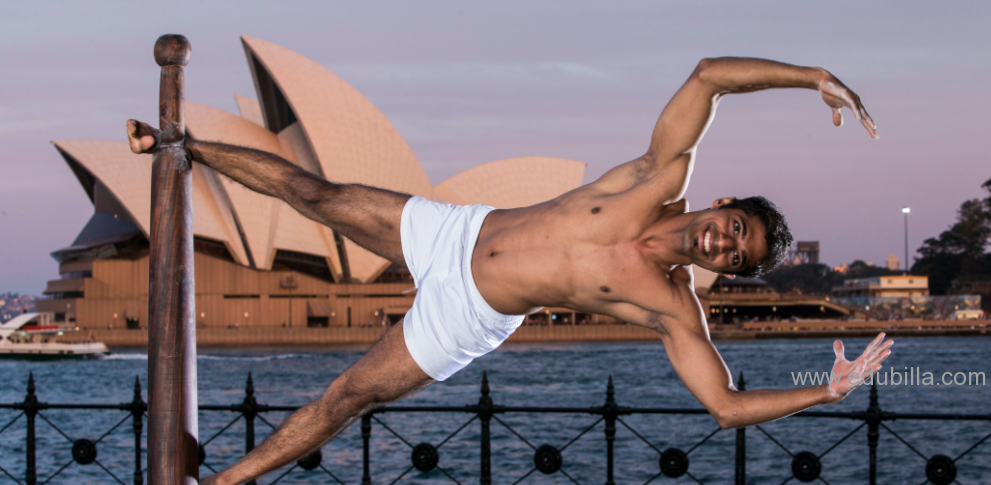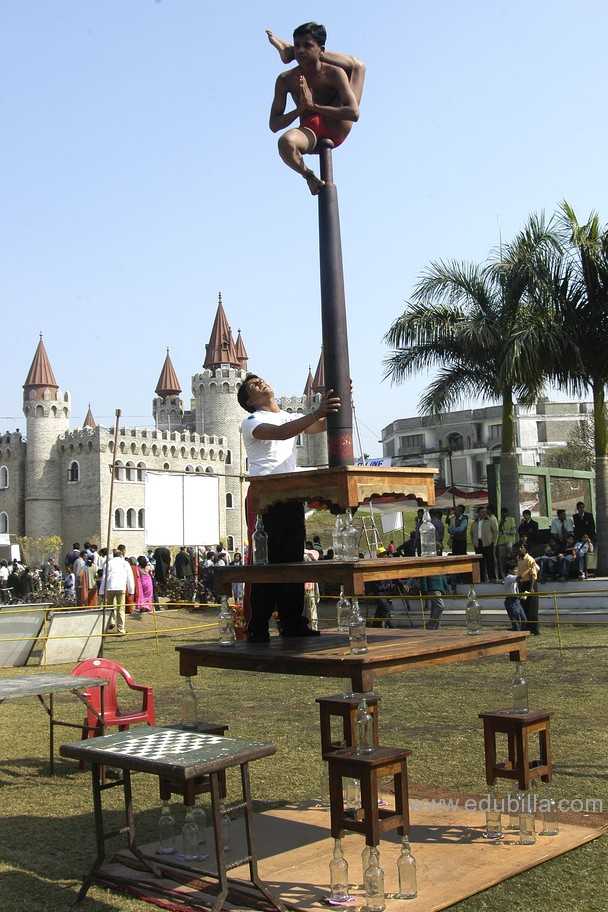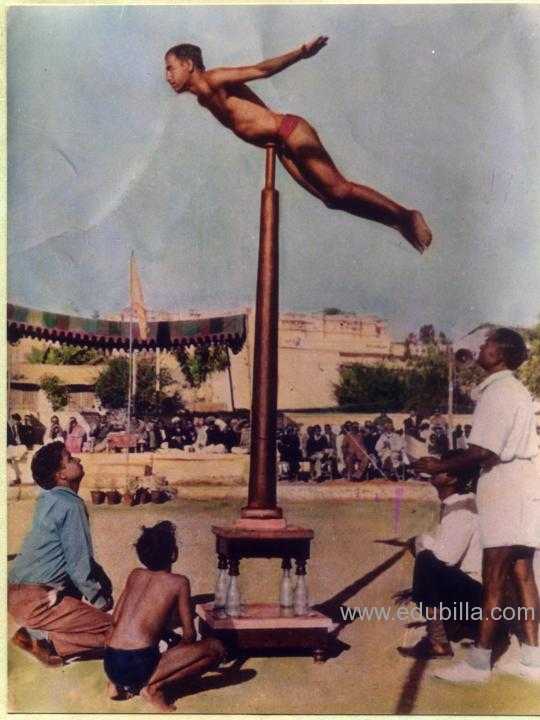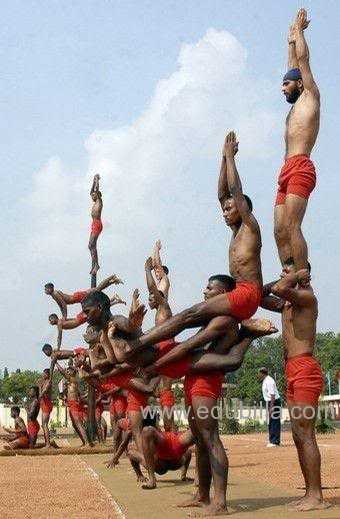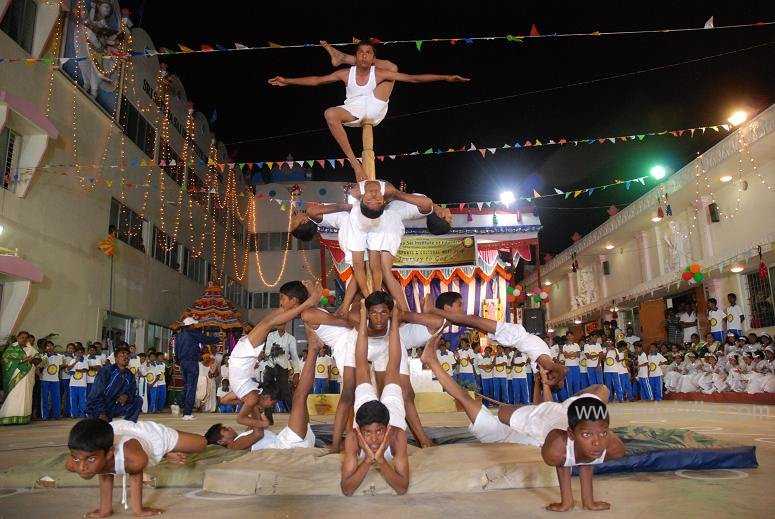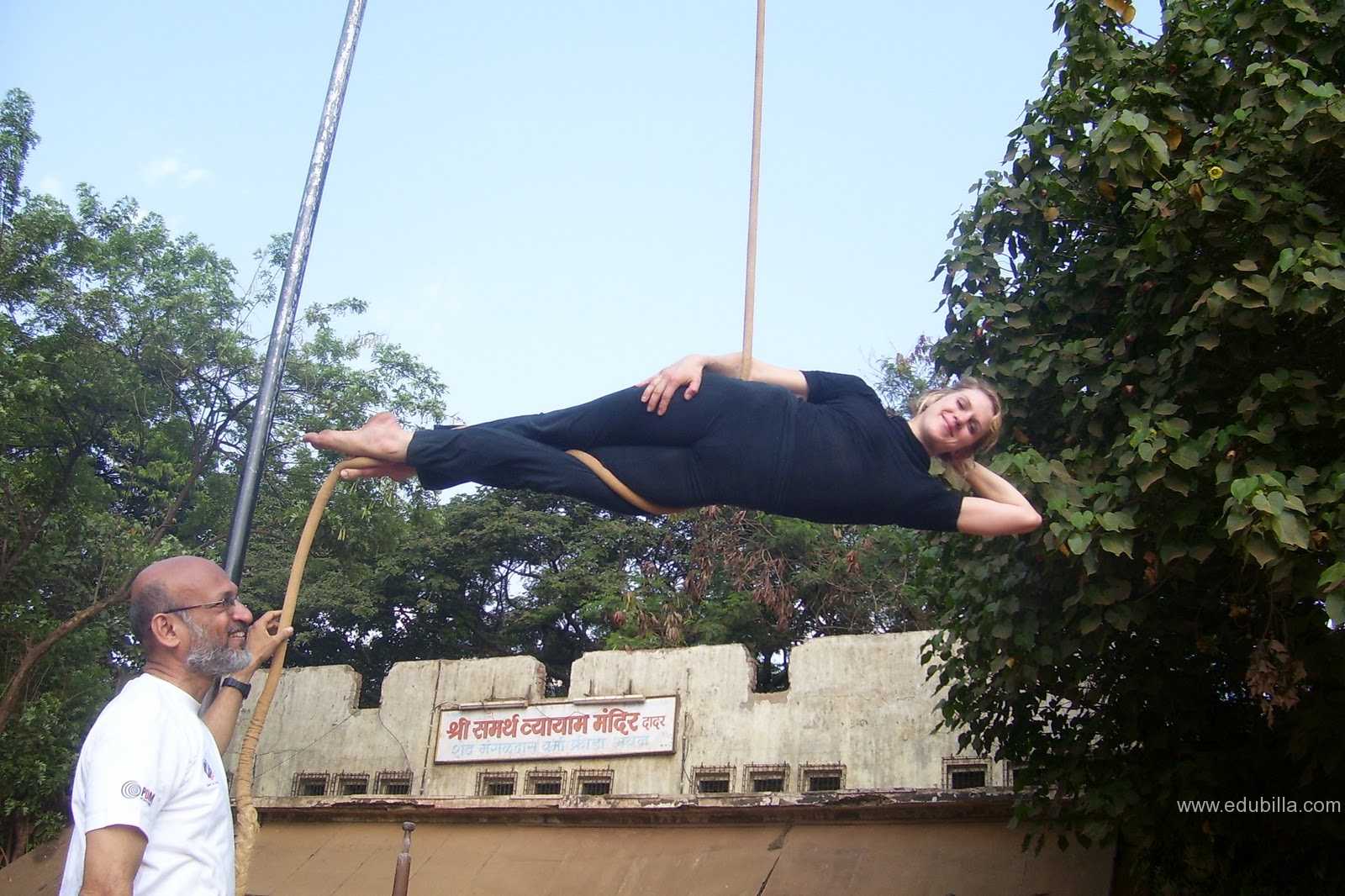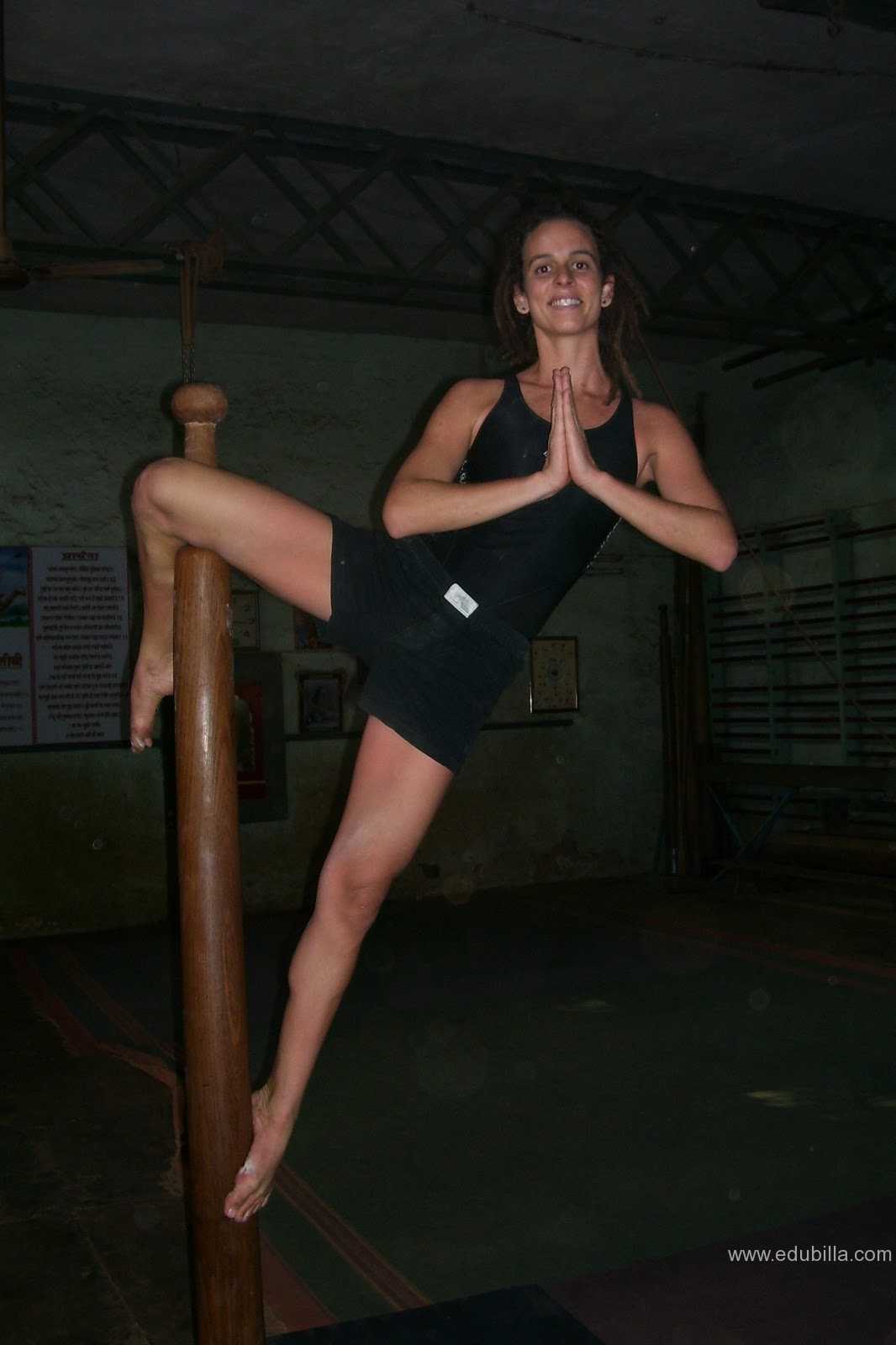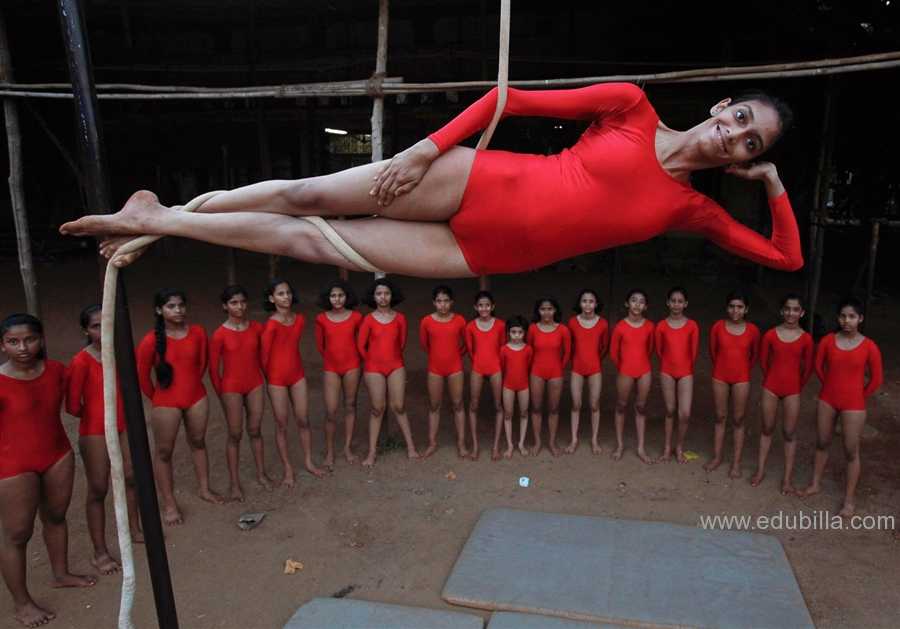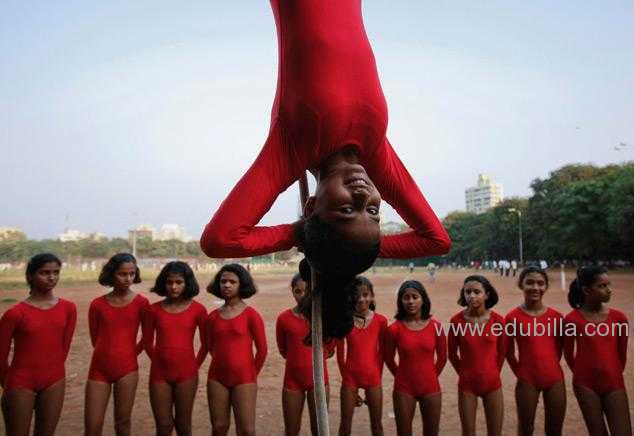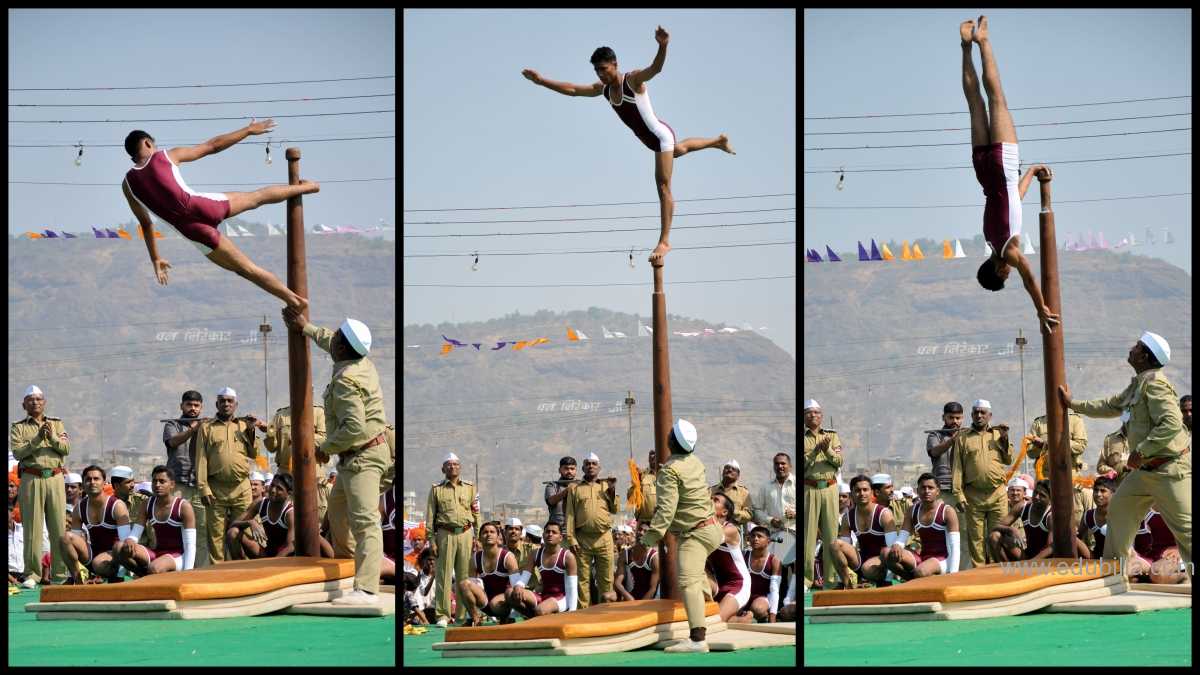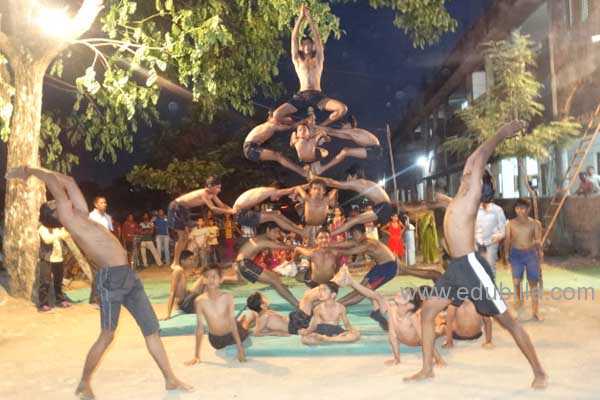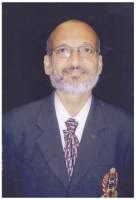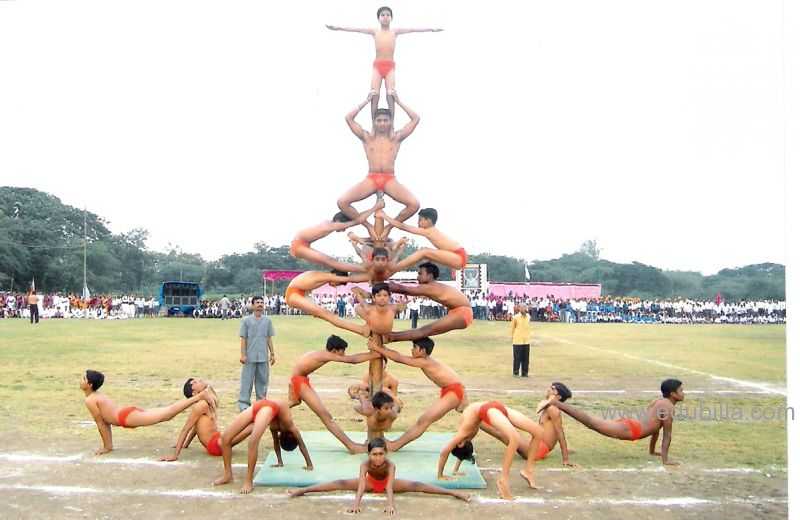
Overview Of Mallakhamb
Mallakhamb is a traditional Indian sport in which a gymnast performs feats and poses in concert with a vertical wooden pole or rope. The word also refers to the pole used in the sport.
Mallakhamba derives from the terms malla which denotes a wrestler and khamba which means a pole. Mallakhamba can therefore be translated to English as "pole gymnastics".On April 9, 2013, the Indian state of Madhya Pradesh declared mallakhamba as the state sport.
King of the Ring:
The people of India have practiced Mallakhamb for hundreds of years. It was first introduced as an exercise for wrestlers. They would attack the pole like it was their opponent. The pole allowed them to practice holds and awkward body poses that could be used in the wrestling ring once perfected on the pole.
Types:
Almost 25 to 30 types of mallakhamba apparatus were tried and tested over the years. 16 various types are present, but for sport, only six types are used. Mallakhamba is present in the Hind Kesari, Indian Wrestling championship.Competitively there are three main variations of mallakhamba.
Pole or fixed:
In this variation, a vertical wooden pole is fixed in the ground and the participant performs various acrobatic feats and poses while hanging on the pole. Wrestlers mount, dismount and utilize this pole for various complex callisthenics designed to develop their grip, stamina, and strength in the arms, legs and upper-body.
There are a number of pillars, although the most common is a free-standing upright pole, some eight to ten inches in diameter, planted into the ground. The pole used in competitions is a straight pole made of teak or sheesham wood, standing 2.6 metres (8.5 ft) in height with a circumference of 55 centimetres (22 in) at the base. It gradually tapers to a circumference of 35 centimetres (14 in) at the top.
Hanging:
The hanging mallakhamba is a wooden pole that is shorter in length than the standard pole and is hung from chain and hooks, leaving a gap between the ground and the bottom of the mallakhamba.
Rope:
In this variation, the participant performs exercises while hanging from a rope suspended from a support.
Mallakhamb Competitions:
THE MALLAKHAMB FEDERATION OF INDIA (M.F.I.) was established with a view to make the game more disciplined, standardized and to make the activity more coherent in 1980. M.F.I. has standardized basic 3 types of this sport to be played in the competition.
According the rules of M.F.I., hierarchy of the competitions is as follows:
1) PUNE DISTRICT MALLAKHAMB ASSOCIATION - The DISTRICT level competitions
2) MAHARASHTRA AMATEUR MALLAKHAMB ASSOCIATION- The STATE level competitions
3) MALLAKHAMB FEDERATION OF INDIA - The NATIONAL level competitions
These are the main competitions.
The other competitions are as follows:
4) ZILLA PARISHAD CHAMPIONSHIPS
5) ALL INDIA INTER UNIVERSITY CHAMPIONSHIPS
6) THE MUMBAI MAYOR INVITATIONAL CHAMPIONSHIPS
At present, 29 states in India participate in Mallakhamb competitions and it has been almost 25 years , the National level Mallakhamb competitions are organized.
Mallakhamb today is also being practiced outside India. It feels really proud that a sport of Indian origin is being appreciated and practiced by people outside our country as well.
Game Rules
The game is played around a pole and oil is applied on the pole in order to avoid rug burns and friction. There are various skills which are required to judge the performer out of them the 5 most important categories are as follows-
Mounting- In this category, the performer is required to jump and run on the pole.
Acrobatics- In this category, the participants are required to do flips, turns and twists on the pole with smoothness and speed.
Catches- the skill of catching the pole after flying in the air is also required.
Balances- the performers are required to maintain balance on the pole.
Dismounts- this skill makes the performers jump off from the top of the pole.
The game has no fixed rules and regulation to play but the manner in which the performers lay this game makes the people watching the game spellbound.
Court Dimension:
The Mallakhamb sport is played in an open ground which has mud on the floor. It is not played in any closed court or stadium.
Equipments Need For Mallakhamb
The game is played without any equipment except that the players need to have dexterity and concentration while playing the game.
History Of Mallakhamb
The origin of this ancient Indian sport can be traced to earlier part of the 12th century. A mention of wrestlers exercising on wooden poles is found in the Manasholas, written by Chalukya in 1153 A.D. It was revived late in the 19th century by Balambhatta Dada Deodhar, physical instructor to Bajirao Peshwa II, He took great efforts to popularize this sport. Resemblance of the shape of the Ancient and Modern Mallakhamb to the human structure can be easily seen. At first Mallakhamb was always concerned with Kusti, to learn different styles of Kusti. Now a days the game also includes Gymnastics. It is leaving ancient grips. The present game includes supple body, alert muscles and mind, concentration and expansion of the muscles, rhythm in breath, eyes wide open etc. Now a days at the competitive level the degree of difficulty is increasing day by day. The need of safety instruments is felt.
Origin Of Mallakhamb
The origin of this ancient Indian sport can be traced to earlier part of the 12th century. A mention of wrestlers exercising on wooden poles is found in the Manasholas, written by Chalukya in 1153 A.D. It was revived late in the 19th century by Balambhatta Dada Deodhar, physical instructor to Bajirao Peshwa II, He took great efforts to popularize this sport. Resemblance of the shape of the Ancient and Modern Mallakhamb to the human structure can be easily seen. At first Mallakhamb was always concerned with Kusti, to learn different styles of Kusti. Now a days the game also includes Gymnastics. It is leaving ancient grips. The present game includes supple body, alert muscles and mind, concentration and expansion of the muscles, rhythm in breath, eyes wide open etc. Now a days at the competitive level the degree of difficulty is increasing day by day.
First Tournaments:
The Mallakhamb Federation of India is the official Indian National Federation. 29 states of India has participate in mallakhamba competitions at the national level. National level mallakhamba tournaments were first time organized more than 25 years ago. The national level tournament will be organized in four separate groups according to age. They are:
- Under 12
- Under 14
- Under 17/18 (17 for women and 18 for men)
- Above 17/18
Governing Bodies
Mallakhamb Confederation of World, MCW:
- Mallakhamb Confederation of World is not to profit making organization established for to develop, promote the Mallakhamb sports and try to popular this sports among the peoples / students of entire the world to benefit them in all manners.
- MCW act as a sole & complete in-charge and work as official world governing body of the Mallakhamb sports.
- Dr. Jaydeepsinh Jadhav (INDIA) conceived modern Mallakhamb, due to his initiative the first time World Cup of Mallakhamb tournament organized at Spain in Association with the International Yoga Federation, which has held in 2004. The Mallakhamb Confederation of World (MCW) constituted itself on 1 January 2011.
- The Mallakhamb Games are competitions between athletes in individual, both in same gender and/or mix gender, team events and not between states (Countries). They bring together the athletes selected by their respective NFs, whose entries have been accepting by the MCW. They compete under the technical direction of the MCW concerned.
- The Mallakhamb Games consist of the Games of the World Cup / Championships and Confederation Cup under various age & gender categories. The followed mentioned events are recognized and approved by the MCW that's the Pole, Rope, Hanging Pole, Hanging Rope and/or Cloth strips, Double Pole, Double Hanging Rope, Artistic Pole / Rope Mallakhamb, Rhythmic Pole / Rope Mallakhamb and all those all styles are practiced traditionally in India, etc.
To Visit MCW Click Here
Asian Mallakhamb Federation, AMF:
Asian Mallakhamb Federation is not to profit making organization established for to develop, promote the Mallakhamb sports and try to popular this sports among the citizens of entire Asia to benefit them in all manners. It is affiliated with Mallakhamb Confederation of World (MCW).
Asian Mallakhamb Federation act as a sole & complete in-charge and work as official Mallakhamb sports governing body of Asia. Asian Mallakhamb Federation has been legally constituted with the efforts of Founder President of Mallakhamb Confederation of World (MCW) constituted itself on 1 January 2011 and incorporated by Govt. of India under [Pursuant to sub-section (2) of section 7 of the Companies Act, 2013 and rule 8 of the Companies (Incorporation) Rules, 2014] in 3/11/2014 and it's head quarter situated in Pune, Maharashtra, INDIA.
To Visit AMF Click Here
Awards Related To Mallakhamb
Rajiv Gandhi Khel Ratna Award:
The scheme was launched from the year 1991-92 with the objective of honouring most outstanding sportspersons to enhance their general status and to give them great dignity and place of honour in society. Under this scheme, an amount of Rs. 1.00 lakh is given as award for the most spectacular and outstanding performance in the field of sports by an individual sportsperson or a team. The award for the year 1994-95 was jointly given to Cdr. Homi D. Motiwala and his crew Lt. Cdr. P.K. Garg for their glorious career and outstanding achievement in the field of Yatching on 29.8.95 by the President of India at Rashtrapati Bhawan.
Arjuna Award:
The Arjuna Award was instituted in 1961 as the highest national recognition of distinguished sportspersons. The awardee is given a bronze statuette of Arjuna, a scroll, and a cash prize along with a monogram, a blazer and a tie. During the year 1994, the amount of cash prize to the winner of the Ariuna Award was Rs. 50.000/ 241. Arjuna Awards for the year 1994 were Presented by the president of India to 8 outstanding sportspersons at Rashtrapati Bhawan on the 29th August, 1995.
Dronacharya Award:
Dronacharya Award was instituted in 1985 to honour eminent coaches who have done outstanding and meritorious 'work on consistent basis, to motivate them to dedicate themselves with a singularity of purpose for raising the standards of sportspersons to highest performance in international events and bring glory to the country. The award is given to those who have produced outstanding achievements consistently during three years preceding the Award. Those who have contributed their life time to sports and sports promotion are also considered for this award.
SHREE SHIV CHATRAPATI AWARD:
Sports Worker, in Mallakhamb, Conferred by the Government of Maharashtra.
Dadoji Kondadev Puraskar:
Best Coach in Mallakhamb conferred by the Government of Maharashtra.
Sample Documents Of Mallakhamb
-Pele

